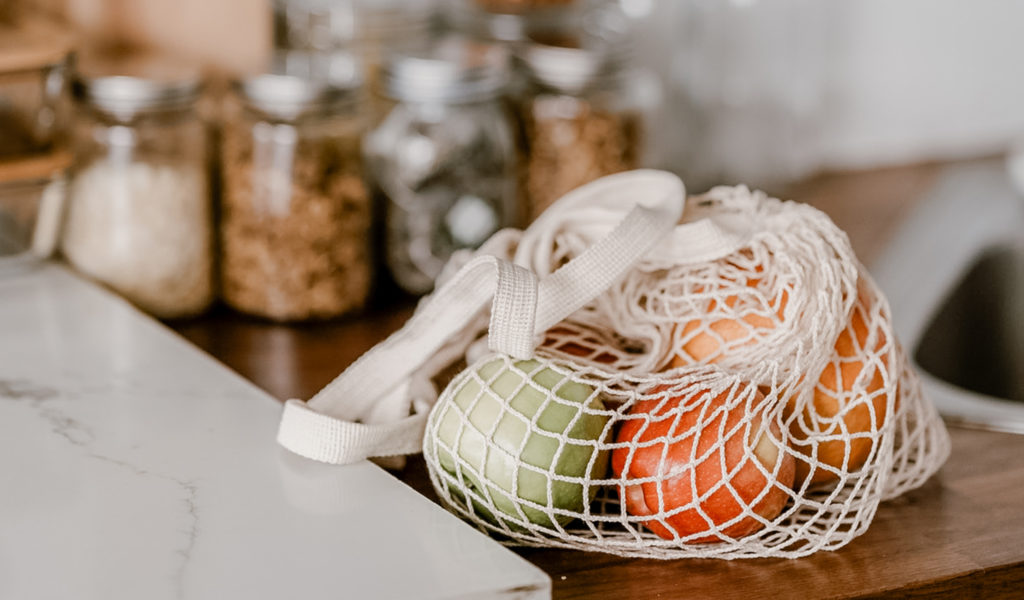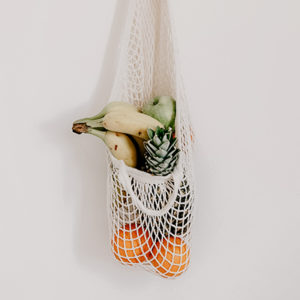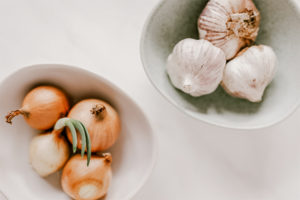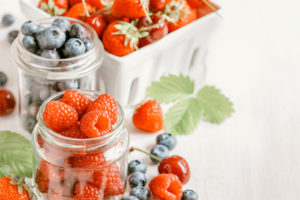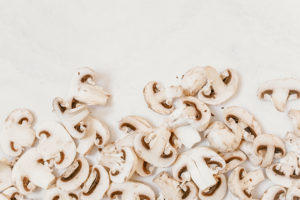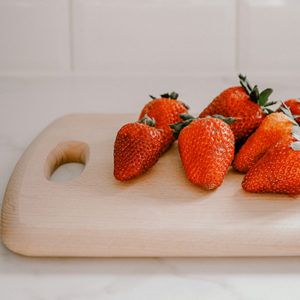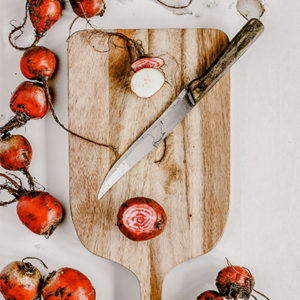A lot of food waste gets produced in domestic US kitchens and as much as 95% of it ends up in landfill instead of being composted. This unnecessary food waste exacerbates environmental issues like climate change through the release of methane into the atmosphere—a greenhouse gas 86% more potent than carbon dioxide.
Laws are changing around disposal of commercial organic waste, and municipalities are increasing their capacity for curbside recycling. Meanwhile, each one of us can make a difference in our own homes by ensuring that we keep our food fresh and edible just that little bit longer. The beauty of this measure is that the economic rationale is as persuasive as the environmental—throw less food away and you’ll spend less money on food.
There isn’t a single golden rule to apply to the storage of all fresh produce. The main variables are temperature, ethylene (we’ll get to that), and airflow. Certain fruits benefit from aeration but most veggies last longest when sealed in airtight containers in the refrigerator. While some items, like onions and potatoes, shouldn’t be refrigerated at all.
To help you master the art of food preservation and conservation then, here we’ve compiled our top zero-waste kitchen tips and tricks so you can save money and the environment in one fell swoop.
Keep Ethylene-Sensitive Items Separate from Gas-Emitting Ones
Ethylene is a gas given off by certain fruits and vegetables that accelerates the ripening process in nearby produce. You may have heard the sage advice to keep your bananas separate from other fruit in the bowl, but there are a whole bunch of ethylene emitters that should be kept separate from other fresh food. Onions, apples, and bananas all emit ethylene and cause vegetables like broccoli and lettuce to go off prematurely.

Source: instagram.com
Keep Food Fresh in Airtight Containers
Do glass containers keep food fresh for longer? Well, starting with the most widely applicable rule; anything that you would ordinarily refrigerate will last longer if sealed in an airtight container like a glass mason jar or a stasher bag or. Simply put, sealing off the air supply allows the product to retain its natural moisture and prevents dehydration. It also protects the product from the ethylene gasses floating around your fridge which accelerate the ripening process.
NB: The crisper drawer in most fridges does a slightly less effective but similar job, but a properly sealed container will mean things do last that little bit longer.
What To Store at Room Temperature
How to make food last longer without a fridge is a matter of understanding the needs of your produce. Potatoes, onions, and garlic are best stored at room temperature (keep potatoes and onions separate to avoid the onions’ ethylene attacking the potatoes).
They need plenty of air circulation, so when you get home from the market you should remove them from their plastic as soon as possible (or better yet, shop with your own reusable bags and avoid plastic packaging altogether).
A word of caution; if you keep potatoes in the fridge they will begin to convert starch into sugar and go off faster. Gourds such as butternut squash can remain at room temperature too and will keep for months.
NB: The green shoots that onions and garlic sprout over time are harmless and can be trimmed off or thrown in the pan with the rest of the item.
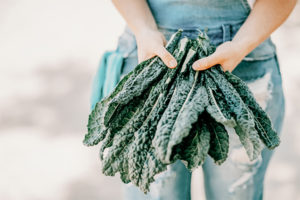 Don’t Pre-Wash Your Veg
Don’t Pre-Wash Your Veg
While it might suit your schedule to pre-wash all your leafy greens before stashing them in the refrigerator for speedy use midweek. Too much moisture left on the leaves will lead to faster deterioration in the fridge. So, try to avoid washing them ahead of time but if you really must, wrap them in a clean towel inside the fridge to absorb excess the moisture.
Apples Belong in the Fridge
Contrary to popular belief, and Airbnb images worldwide, the apple does not live well at room temperature. Apples should be stowed in the fridge, ideally in a sealed container to stop their supply or ethylene from over-ripening neighboring fruit.
Keep Food Fresh Containers
We keep mentioning air-tight containers, but which kind of container is used to keep food fresh longer, while also promoting zero waste? There are clear sustainability benefits to silicone over plastic, although it’s not the slam dunk victory that some kitchenware suppliers would like to claim.
Some silicone products still suffer from the chemical leaching that plagues plastic Tupperware, so be sure to seek out food-grade certified silicone products. As well as using fossil fuels in its production, silicone is not easily recyclable. Using stainless steel or glass for fresh food storage (e.g. a mason jar) is perhaps better because it is non-reactive, less prone to staining, and more easily recyclable curbside.
Wash Fresh Berries in Vinegar Before Refrigerating
Some foodies swear by washing fresh berries in vinegar to eliminate bacteria (from which mold will eventually develop). Start by soaking the berries in a vinegar and water solution, dry them thoroughly on kitchen towel, and then store in an airtight container like a mason jar. The berries should stay fresh for around two weeks. By contrast, most other fruits do not benefit from being kept in a sealed container.
Freeze Food Instead of Letting it Rot
A far greater range of food can be frozen than we think. And although some nutrients may be lost in the process, this is a far smarter compromise than simply waiting for something to rot at the back of the fridge before tossing it in the trash. So, if you have no time or inspiration to use those root veggies languishing in the crisper drawer, chop them up and stick them in the freezer for use on a more inspired evening down the line.
Long Term Food Storage
Certain items we buy fresh are not fated to be either eaten or thrown away. Instead, you can learn how to prepare long term food storage. For example an excess of fresh mushrooms could be dried out in the oven and stored in jars in the cupboard for up to a year. They’ll go great in risotto and pastas at any point. Aging bread can also be toasted to rid it of its moisture and then whizzed up for breadcrumbs which will also keep in airtight mason jars at room temperature for around 6 months.
Plan Better, Shop Better
It may seem obvious, but don’t buy anything fresh unless you have an idea of how you are going to use it. If you follow this simple rule and use the freezing and storage tips we’ve laid out above, everything you buy will get used in your kitchen. This means making proper lists and being honest with yourself about how often you are going to cook throughout the week.
Don’t Throw the Baby Out with the Bathwater
It is worth mentioning that if there is a speck of mold on a piece of fruit, don’t throw the whole thing away. One bad patch does not mean that the whole tomato is past its best. Simply slice off the affected area with a knife and store the remainder in an airtight container for use over the next few days.
Trim The Heads
While it might take away from the rustic look of your crisper drawer, it is best practice to trim the leafy heads off things like carrots and radishes. This is because the leaves draw moisture out of the vegetable and thus hasten decay.
With these zero-waste tips and tricks for keeping your fresh food fresh, you are sure to reduce kitchen waste. What sort of produce container is used to keep food fresh longer is a matter of some debate; glass, steel, silicone are all worthy solutions, but using what you already have at home is the best place to start.
Any truly unavoidable food waste can still be diverted from landfill by composting. If you don’t have a garden, there are a whole range of indoor compost bins to suit your every home. For more zero-waste kitchen products check out our online shop or browse our blog for a range of tips on going zero waste throughout your home and everyday life.

